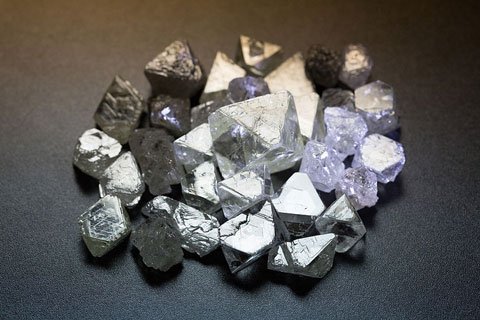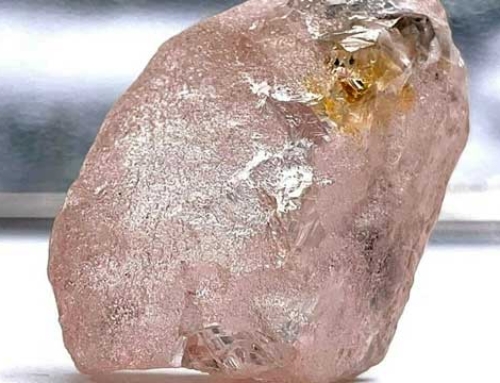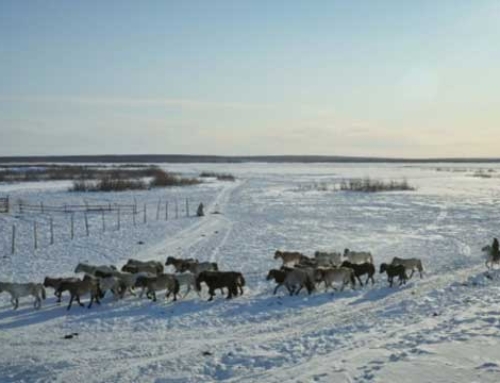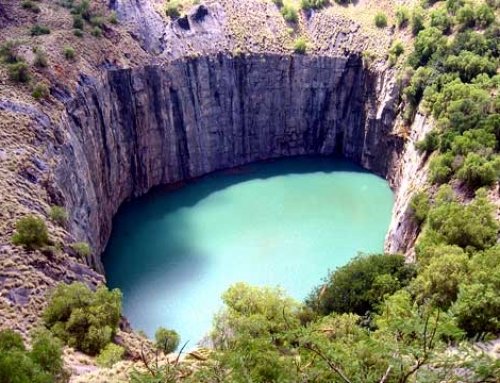Much has been said about the journey rough diamonds take from mine to market, particularly as the industry is increasing its provenance claims and tracking goods along the pipeline. While an estimated 80% to 90% of diamonds are cut and polished in India, they’re typically not sent directly from the mining centers to the factories.
Rather, they stop in the trading centers along the way, with a large proportion of goods being sent to both Antwerp and Dubai before reaching Surat for manufacturing.
That marks a notable change in the rough diamonds journey from less than 10 years ago. Back then, for example, De Beers sent its production from its mines in Botswana, South Africa, Namibia and Canada to London for sorting and sales. The goods were then shipped to Antwerp and traded before transportation to the factories, with the average rough diamond changing hands four or five times before being cut and polished.
After De Beers moved its sorting operations and sight location to Gaborone in 2013, the journey changed course, with Botswana emerging as an important rough sales center. At the same time, some traders moved to Dubai due to tax and banking difficulties in Antwerp.
Antwerp still remains the most important rough trading hub, and has maintained its critical mass of rough activity. An estimated 84% of all rough passes through Antwerp, with many of the smaller and medium-size miners holding auctions there. But Dubai has emerged as the second largest rough trading center in recent years.
Goods from both centers are largely then passed on to India, with Belgium accounting for some 31% of India’s rough supply in fiscal 2017, and the UAE contributing 26% of the total (see chart below). Approximately one-third of India’s supply was sent directly from the mining centers.
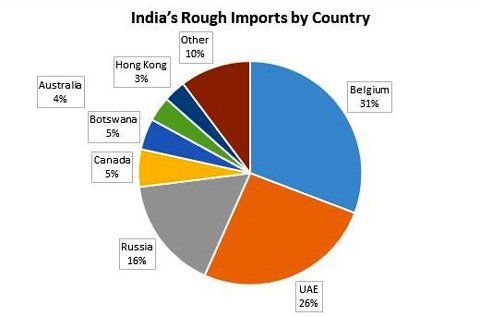
Based on data from India’s Commerce Ministry.
Russia and Botswana are naturally among the largest sources of rough supply to India and Belgium, given that they’re the location of Alrosa and De Beers sales, respectively.
Who’s buying the rough diamonds production?
These trends are evident in the locations of the major buyers of rough diamonds. Not all diamond mining companies have the scale of production to provide the consistency of supply that the large manufacturers require for continuity in their operations. Manufacturers also need guarantees to ensure polished supply to their jewelry wholesale and retail clients, who often run programs with specific needs.
Most junior and midsize miners sell via spot auctions or tenders, whereby buyers compete for rough in a bidding process. Only De Beers, Alrosa, Rio Tinto and Dominion Diamond Mines — which account for an estimated 70% of global supply volume — have the scale of production that enables them to guarantee a scheduled, consistent supply of rough to a set group of clients.
Between them, they’re supplying 124 diamond companies, many of which are buying from multiple sources. Among those companies, 41 are headquartered in India, 38 in Belgium, followed by Israel with 15, seven in each of Russia and the US, and six based in Hong Kong. Other locations include South Africa, Namibia and Switzerland.
De Beers sells an estimated 90% of its production through its long-term contracts with sightholders, with the current contract set to end in March 2019.The remaining 10% is sold at its auctions. The co
mpany has 67 global sightholders, 17 in Botswana, six in South Africa, nine in Namibia, one in Canada and three receiving industrial rough supply. Sightholders in southern Africa have to manufacture the majority of their supply in those countries. De Beers also makes available any excess supply – known as ex-plan – to 14 accredited buyers across its various sights.
Alrosa sells about 70% of its production through long-term contracts in its Alrosa Alliance program. It has 55 companies on the program and nine “Other” Alliance members who are candidates to become contracted buyers and can use any Alrosa branding in their own marketing.
Along with the 18 Rio Tinto Select Diamantaires and 26 companies buying from Dominion on a consistent basis, these manufacturers represent the premium buyers of rough on the market. How they buy and trade rough and sell the resulting polished sets the tone of the diamond market, and determines the path along which the diamond takes in its journey along the pipeline.
Source: Rapaport Research Report


